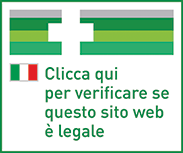Ship in Europe, Find out rates!
Xamamina Children 25mg Dimenhydrate Antiemetic 6 Softgels

- box Delivery in Italy in 24/48 and free returns
- star3.000+ positive reviews
- dropboxOver 60,000 products in the catalog
Therapeutic indications
Xamamina is a medicine used to treat phenomena such as seasickness, plane, car and train sickness.
Dosage and method of use
In children aged 2-6 years 1 soft capsule of Xamamina Children half an hour before travel up to a maximum of 3 times in 24 hours. In children aged 7-12 years 1-2 soft capsules of Xamamina Children half an hour before travel, up to a maximum of 2-3 in 24 hours.
Contraindications
Hypersensitivity to the active substance, to other antihistamines or to any of the excipients.
Contraindicated in children under 2 years of age.
Contraindicated during pregnancy and lactation
Special warnings
Xamamina should be administered with caution in subjects suffering from narrow-angle glaucoma, prostatic hypertrophy, urinary retention, slowed intestinal transit, bronchial asthma, epilepsy, porphyria. The product may mask the symptoms of ototoxicity and therefore should be administered with caution to patients receiving ototoxic drugs.
Soft capsules and medicated chewing gum contain sorbitol: patients with rare hereditary problems of fructose intolerance should not take this medicine. The soft capsules contain parabens which can cause allergic reactions (including delayed ones).
Pregnancy and breastfeeding
Pregnancy
In reproductive studies in rats and rabbits, doses 20-25 times higher than those normally used in therapy in humans did not show teratogenic effects or impaired fertility. However, no data are available on the use of the product in pregnant women. Therefore, although the teratogenicity of the product appears unlikely, the use of dimenhydrinate in pregnancy is contraindicated.
Feeding time
Small amounts of dimenhydrinate pass into breast milk. Given the possible adverse events of the product in infants, the use of dimenhydrinate during lactation is
contraindicated.
Expiry and retention
Xamamina must be stored at temperatures not exceeding 25 °.
Warning: do not use the medicine after the expiry date indicated on the package.
Composition
Xamamina contains, for each capsule:
Active ingredient: dimenhydrinate 25 mg;
Excipients: macrogol 400;
Wrapping: gelatin; partially dehydrated liquid sorbitol; ethyl sodium-parahydroxybenzoate (E215); propyl sodium parahydroxybenzoate (E 217).


